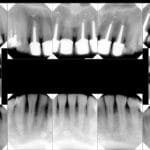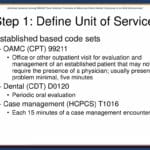This guide provides a comprehensive overview of the D0210 dental code, explaining its purpose, usage, and importance in dental care and insurance billing.
Decoding the D0210 Dental Code
The D0210 code isn’t secret dentist jargon; it’s simply the American Dental Association (ADA) code for a full mouth series of X-rays (FMX). This comprehensive series provides a detailed view of your teeth, gums, and underlying bone structure, giving your dentist crucial diagnostic information. Think of it as a blueprint of your entire mouth, revealing hidden issues not visible during a regular checkup.
What a D0210 Shows
A D0210 typically involves 14-22 individual X-ray images taken from various angles. Some focus on the crowns of your teeth, others capture the roots and bone structure beneath your gums. This comprehensive view helps your dentist develop a 3D understanding of your oral health. If you’re looking for information about the d0120 dental code, which covers routine checkups, we have a guide for that as well.
Why Your Dentist Might Recommend a D0210
A D0210 is a powerful diagnostic tool that can reveal hidden problems, such as:
- Early-stage cavities: Decay that hasn’t yet caused noticeable symptoms.
- Gum disease: Inflammation or bone loss that could progress if left untreated.
- Impacted teeth: Teeth trapped beneath the gum line, often wisdom teeth.
- Infections (cysts or abscesses): Potentially damaging to teeth and surrounding bone.
- Jaw problems: Issues with your temporomandibular joint (TMJ).
Beyond diagnosis, a D0210 is crucial for planning complex treatments like implants, dentures, or extensive restorative work. It provides the necessary roadmap for accurate assessment and a customized treatment plan. A D0210 can also be used to monitor the healing progress of ongoing treatments.
Exploring Other Dental X-Ray Types
The D0210 isn’t the only type of dental X-ray. Other types include:
| X-Ray Type | Code | Description |
|---|---|---|
| Periapical | D0220 | Shows an entire tooth, from crown to root tip. Learn more about the difference between D0220 and D0210. |
| Bitewing | D0274 | Shows the crowns of your upper and lower teeth together. |
These targeted X-rays are useful for specific concerns but lack the comprehensive scope of a D0210. Your dentist will determine the most appropriate X-ray type based on your individual needs and circumstances.
The Importance of the D0210 Code
Accurate coding, using the correct code like D0210, is essential for seamless insurance processing. It ensures your insurance company understands the procedures performed, preventing claim rejections and payment delays. Dental codes are subject to change, often reflecting advancements in technology or billing practices. Consult your dental professional or insurance provider for the most up-to-date information. The D0210’s goal remains constant: providing your dentist with a complete picture of your oral health for informed decisions and optimal care. Curious about epiretinal membrane ICD 10? We have information on that as well.
D0210 vs. D0220: Understanding the Difference
While both D0210 and D0220 involve dental X-rays, they serve distinct purposes. The D0210 provides a panoramic view of your entire mouth, while the D0220 focuses on a single tooth, capturing its root and surrounding area in detail.
Why the Distinction Matters
Accurate coding is critical for insurance claims processing. Using the wrong code can lead to claim rejections and billing issues. The D0210 is used for a full mouth series, providing a comprehensive overview, whereas the D0220 is for a single tooth examination.
| Code | Description | Area Covered |
|---|---|---|
| D0210 | Intraoral – complete series of radiographic images | Entire mouth |
| D0220 | Intraoral – periapical first radiographic image | Single tooth root and surrounding area |
Dental coding guidelines can be complex, and interpretations may evolve. Consult the most up-to-date ADA Current Dental Terminology (CDT) manual or your dental professional for the most accurate information.
D0120: The Periodic Oral Evaluation
The D0120 code refers to a periodic oral evaluation for established patients. This routine checkup assesses your overall oral health, including checking for decay, gum disease, and abnormalities in the soft tissues of your mouth.
What D0120 Entails
A D0120 checkup may include a professional cleaning, fluoride treatment, and sealants. These preventive measures are key to maintaining good oral health. Most dental insurance plans cover D0120 under preventive benefits, but coverage specifics can vary. Check your policy for details on frequency, co-pays, and coverage limits. While the D0120 code is standardized, what’s included and the exact cost can vary slightly between dental practices.
The Importance of D0120
Accurate coding ensures proper billing and helps your insurance company understand the services provided, preventing confusion and unexpected bills. Regular checkups under the D0120 code are considered crucial for early detection of potential oral health issues. Early detection often leads to simpler, less invasive, and less expensive treatment.
| Feature | Description |
|---|---|
| Code | D0120 |
| Description | Periodic Oral Evaluation |
| Patient Type | Established Patients |
| Purpose | Routine Checkups, Preventive Care |
| Typical Services | Examination, Cleaning, Fluoride Treatment, Sealants |
| Insurance Coverage | Usually covered under preventive benefits (check your individual policy) |
Understanding these codes empowers you to be a more informed patient. Don’t hesitate to ask your dentist or insurance provider any questions about dental codes, billing, or your specific needs. They are your best resources for personalized advice.
- Discover Long Black Pepper: Flavor & Health Benefits - April 25, 2025
- Shocking Twists: The Grownup Review: Unreliable Narration - April 25, 2025
- A Quiet Place Book vs Movie: A Deep Dive - April 25, 2025
















2 thoughts on “Understanding Your D0210 Dental Code: A Comprehensive Guide to Full Mouth X-Rays”
Comments are closed.